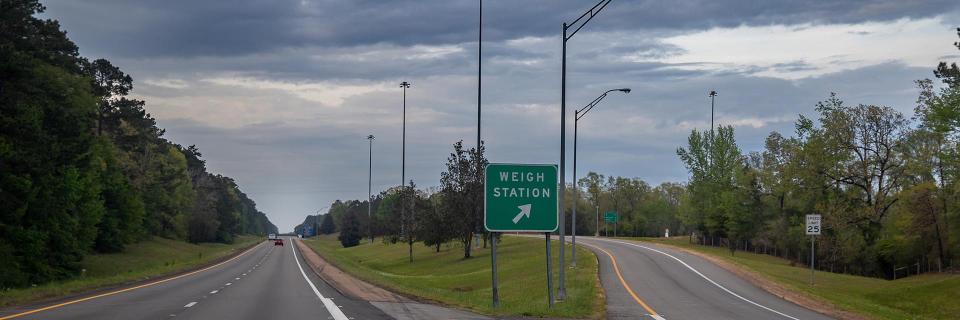
DOT and highway patrol want to ensure that the load you’re hauling isn’t too heavy. A load that exceeds the maximum weight can damage roads and bridges and result in fines for being overloaded. This is the main purpose for weigh stations, but they also allow each truck driver to be inspected for other issues that may prevent them from hauling safely on the road.
You must pass the weigh-in and inspections before you can leave the weigh station and get back on the road. If there are any issues, you could be held up at the weigh station for hours. You can avoid this inconvenience by following these tips and preparing before your next weigh station stop.
1. Inspect Your Truck and Load Before You Begin Your Drive
It is always good practice to perform a pre-check inspection on your truck and your load before you get on the road. This practice will help you succeed during weigh station inspections as you will be aware of the status of your truck and your load.
When you do arrive at a weigh station, your truck inspection will often include the following depending on your inspection level:
- Fuel tanks
- Tires/wheels
- Brakes
- Tubing/hoses
- Springs
- Kingpin
- Truck leaks
- Other inspectable items
Knowing that your truck and load are safe before you arrive at a weigh station can help you get through the inspection process with little to worry about.
2. Be Prepared for Logging Device and Safety Checks
After your weigh-in there will likely be an inspection of your electronic logging device (ELD) to ensure compliance with hours-of-service regulations. Equipment may also be inspected during your weigh station stop to ensure that it’s all available and functional. Your DOT number will be entered into a computer system comparing your information to a database for motor carrier safety ratings and scores.
3. Drive Safely on the Road and Through the Weigh Station
Speeding is never advisable, so drive the speed limit on the road and slow down to the appropriate speed as you enter the weigh station. You must also follow the speed guidelines for entry onto the scale where you may be asked to drive over the scale completely or you may be required to stop to provide a weight for each axle. There may also be slowing and stopping instructions for getting around the weigh station.
4. Follow the Rules and Cooperate During Your Weigh Station Stop
There will be weighing and inspections in progress when you pull into the weigh station, and all these activities require the oversight of a transportation officer. If a transportation officer asks you to do, or not to do, something, be sure that you comply. You may be frustrated by the delay, but following instructions and being compliant will keep the process moving smoothly for everyone and keep the inconveniences at a minimum.
5. Do the Right Thing
The weigh station could have a long line since there are so many commercial trucks on the road that need to be weighed. The wait for your turn could put you behind schedule. If you choose to skip the weigh station without authorization, you may find yourself pulled over by law enforcement officers who often wait near the highway re-entry ramp of the weigh station. You could end up with a ticket and orders to return to the weigh station to complete the process. More extreme penalties include fines or even jail time.
There is a legal way to bypass weigh stations if you’re qualified to do so. If eligible, you may be able to use a bypass pre-clearance device to potentially bypass specific weigh stations along your route.
RTS is backed by a family of brands with over 35 years of experience in the trucking industry. To learn more about our services and offers, such as factoring and fuel discounts, contact us today!